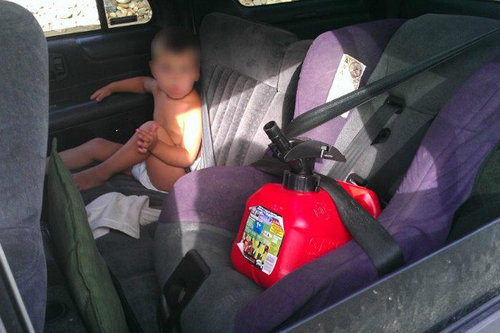Happy Thanksgiving (US)!
Lots of angry turkeys today!
Happy Thanksgiving (US)!
Lots of angry turkeys today!
Yesterday, I went on a rant about taking hypotensive patients to CT. The bottom line is that this is a generally bad idea. However, we all know that there are no absolutes, especially in trauma.
So yes, there are two cases where one could justify taking a hypotensive patient to CT scan. Here they are:
But before you can even consider leaving your resuscitation room, you must ensure that there is no other source of hypotension. This means getting chest and pelvic xrays to look for hemothorax or fractures. It means getting a good FAST exam to make sure there is no significant hemoperitoneum. It also means making sure that any fractures are properly splinted and there is no uncontrolled external bleeding.
You can only go to CT scan once all of these other potential bleeding sources have been ruled out. If in doubt, you must proceed to OR to either stop the bleeding or prove that it does not exist.
Are there any other reasons to take one of these patients to CT that you can think of? If so, leave comments or tweet!
Related post:
Hypotension and CT scanners don’t play together well. For years I’ve cautioned against this, having seen a number of patients crash and burn in this area early in my career. But it’s a common error, and may jeopardize your patient’s safety. A paper that is now in press looked at this practice in a trauma hospital in Taiwan.
Patients who had blunt abdominal trauma were retrospectively reviewed. Those who remained hypotensive (SBP<90) after 2L of crystalloid were scruitnized. The CT scanner was described as being located in the same area as the ED resuscitation rooms. Furthermore, several physicians and nurses were present during scans, and a full selection of resuscitation equipment was available in the scan area.
Here are the factoids:
The authors conclude that “hypotension does not always make performing a CT scan unfeasible.” (weak!)
Read this paper closely and don’t get fooled! It is very retrospective and very small. And if you look at the times carefully, you will see some funny business. How can time to OR or angio be virtually identical regardless of whether CT is used? Is it the world’s closest, fastest scanner? Probably not.
The authors showed that hypotensive patients have a ten-fold increase in mortality. They also recognized that definitive control of hemorrhage is the key to saving the patients. Unfortunately, there are factors in this retrospective study, such as various biases and some undocumented factors that make their two patient groups look artificially alike. This gives the appearance that the CT scan makes no difference.
In reality, the fact that there is no difference in times ensures that there is no clinical difference in outcome. To really answer this question, this kind of study must be done prospectively, and must have an adequate population size.
Bottom line: Don’t even consider going to CT with hypotensive patients. Even if you have the fastest, closest scanner in the world. Shock time still kills, and most CT scan rooms are very poor resuscitation rooms. If your patient is unstable in the ED, do your ABCs, get a quick exam, then transport to the area where you can get control of the bleeding. This will nearly always be your OR.
Reference: Hypotension does not always make computed tomography scans unfeasible in the management of blunt trauma patients. Injury, in press, 2014.
Quick and Dirty: Posterior Hip Dislocation
Here’s a quick 5 minute video full of tips on diagnosing and managing this injury. Originally presented at Trauma Education: The Next Generation 2013.
Today’s big headlines involve the recognition (finally) that law enforcement officers have risky jobs. But not just in the ways you might think. Sure, they frequently deal with criminals who have ill intent or deadly weapons. But some of the risks they face can be mitigated by simple actions.
Here are some factoids:
Unfortunately, a culture has developed among law enforcement (and prehospital / EMS professionals) that seat belts are not necessary (for them). The sad truth is that these professionals are at much higher risk for injury, especially in car crashes, because they must drive faster and in more stressful situations on a regular basis. And police officers (especially in the US) are more and more often confronted with firearms.
Why on earth would they not want this simple protection? Body armor is hot, unwieldy and uncomfortable, especially in warm weather climates. And police officers complain that seat belts complicate getting out of their vehicles, and can get snagged on their utility belts and uniforms.
A number of major police departments and police unions are now pushing for mandatory requirements for seat belts and body armor use at all times. There is now broad recognition that using these devices may cut fatalities in half. Agencies are beginning to check body armor at roll call, and random checks are sometimes performed on the streets by inspectors.
Unfortunately, we need to recognize this problem in EMS as well. And the culture there needs to change, so that protecting the trauma professionals becomes as important as helping the patients that they treat.
Related post:
Reference: Characteristics of Law Enforcement Officers’ Fatalities in Motor Vehicle Crashes. US Dept of Transportation – National Highway Traffic Safety Administration, publication DOT HS 811 411.
Extreme Seat Belt Fail:
